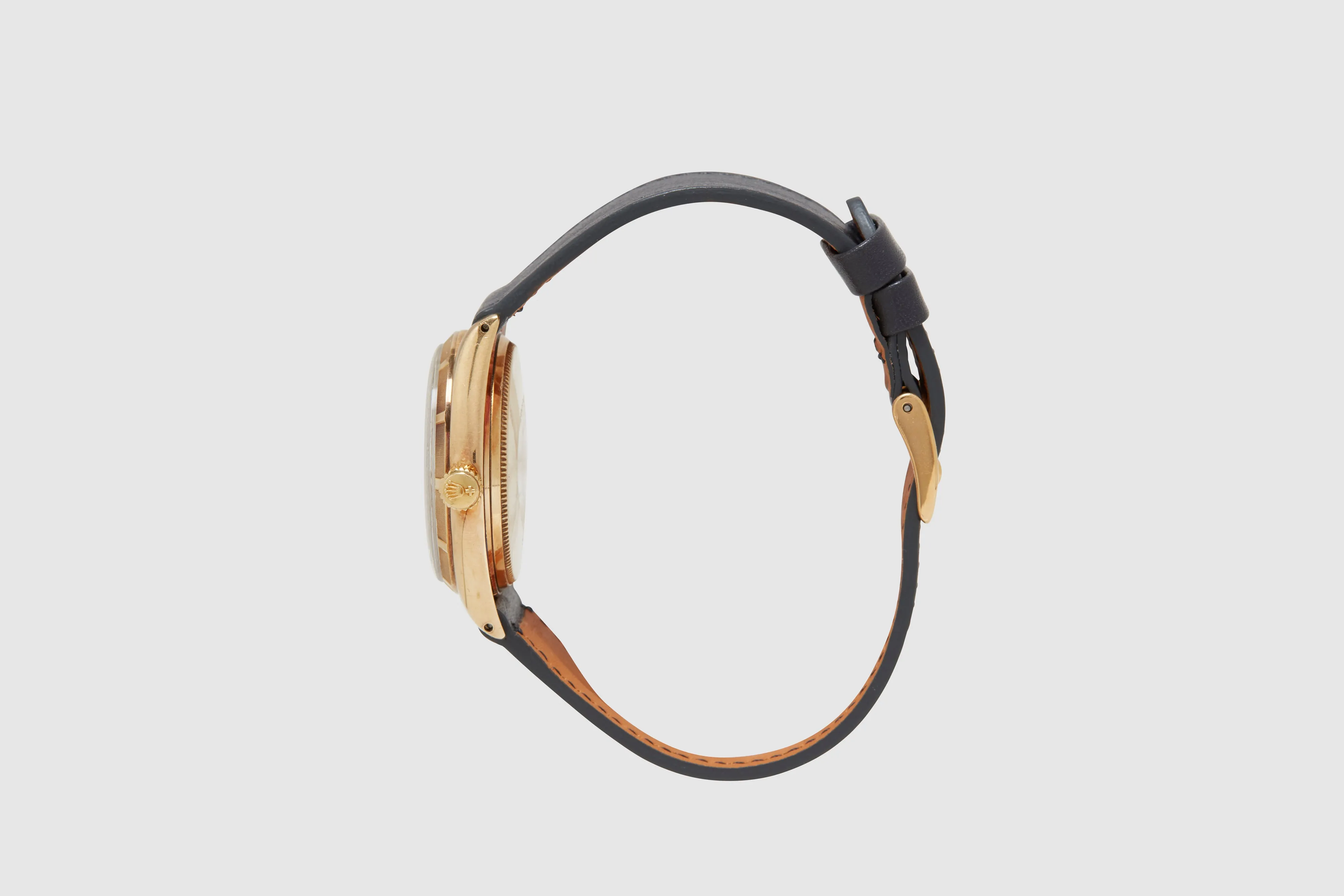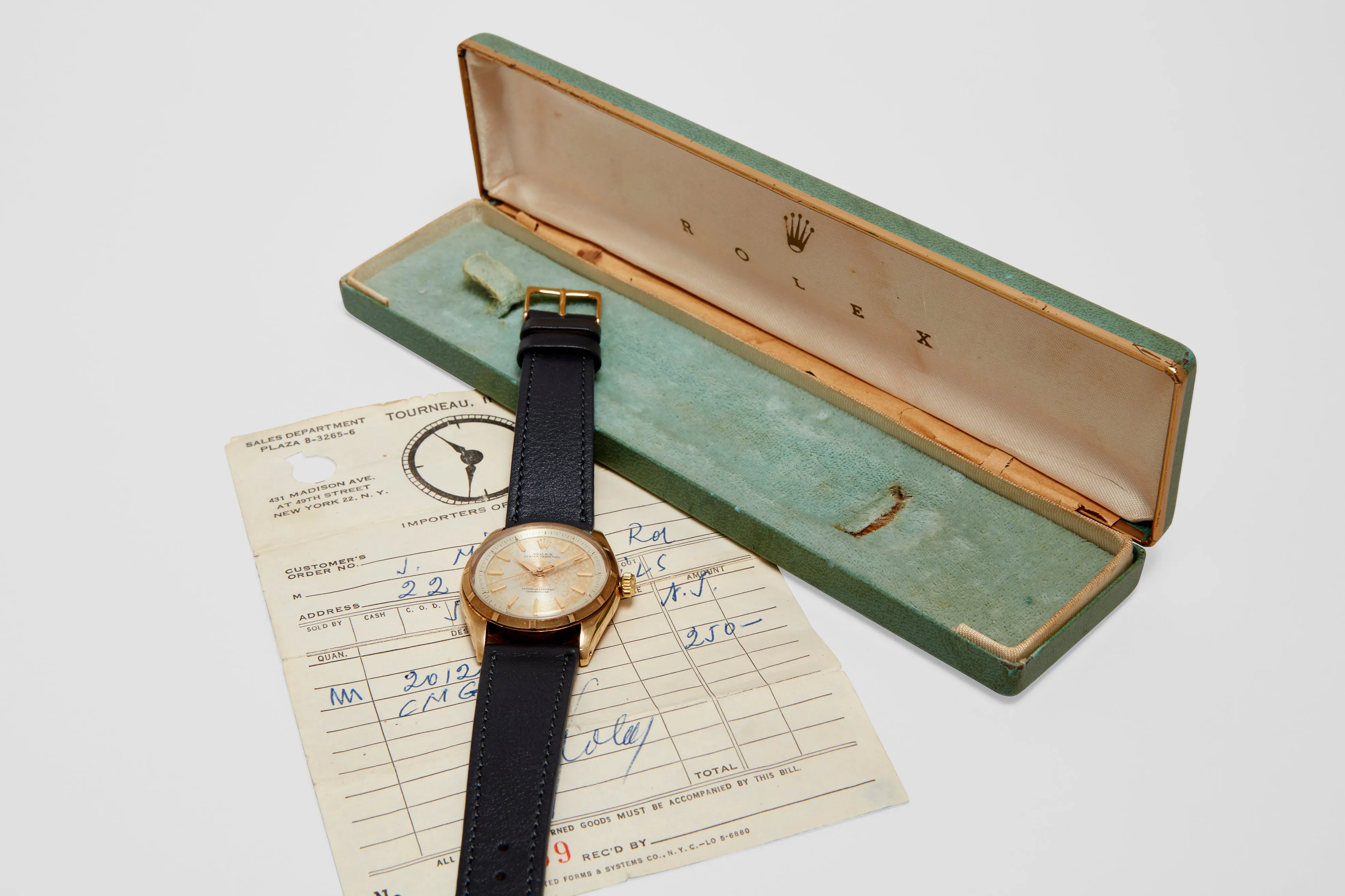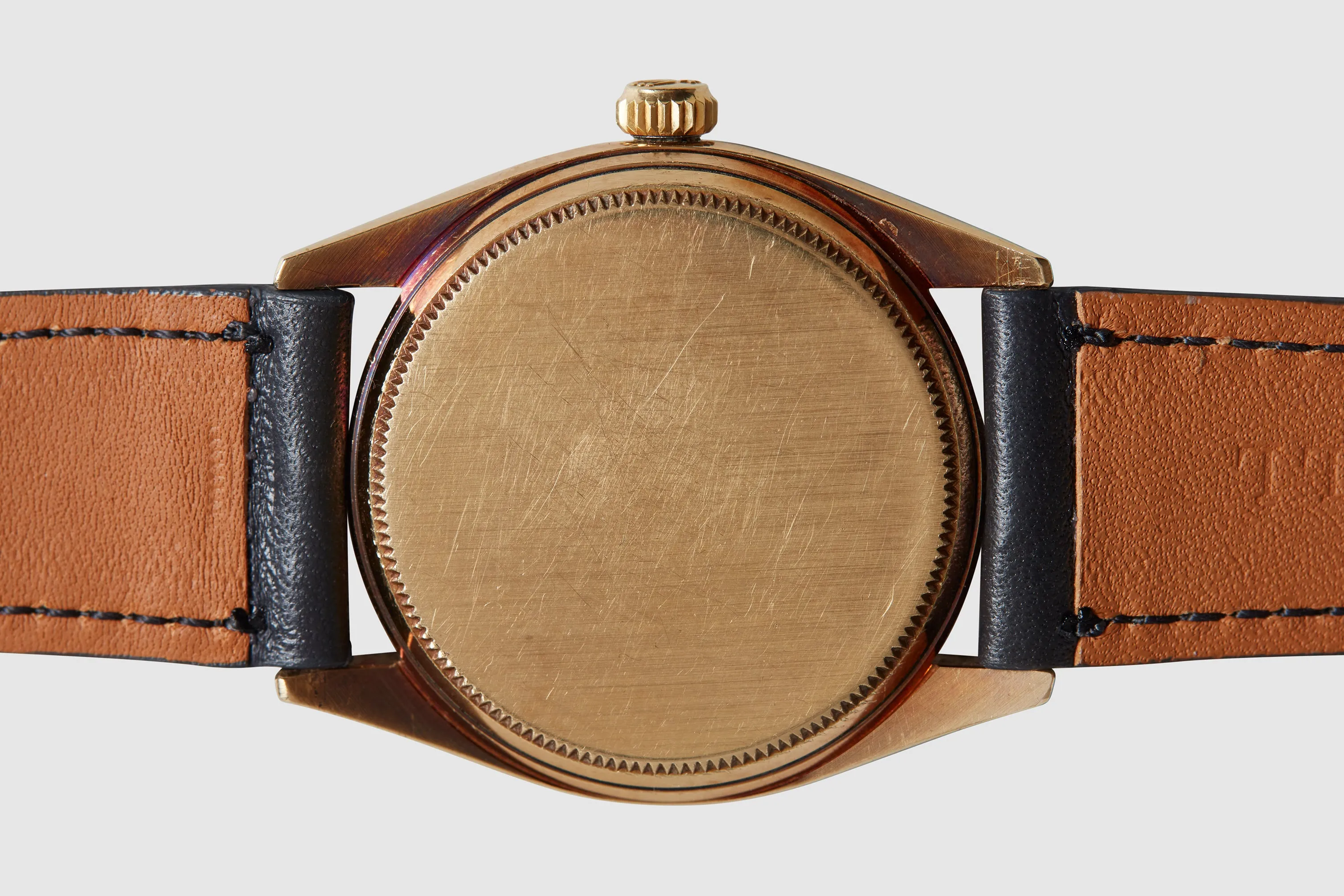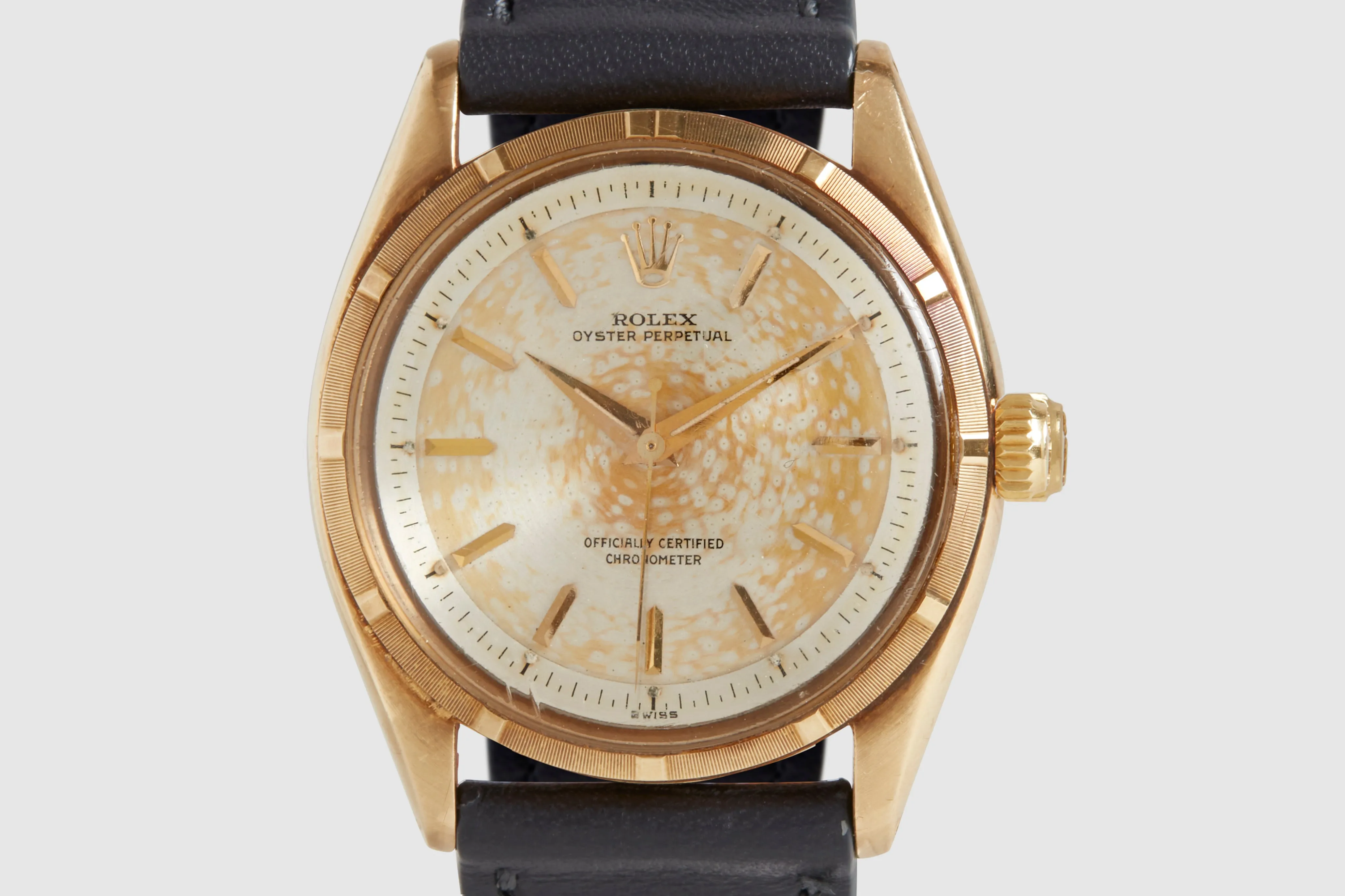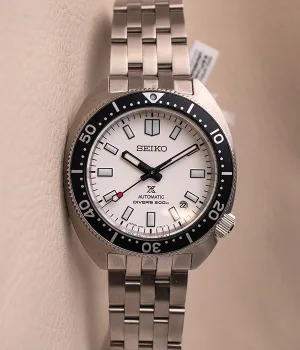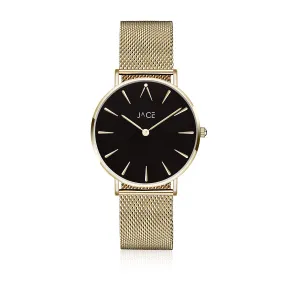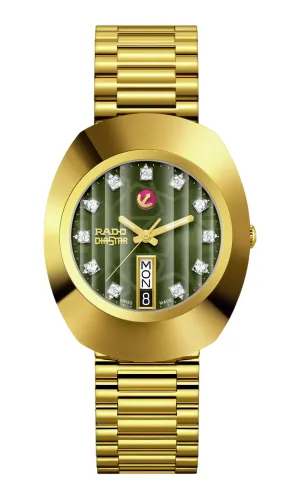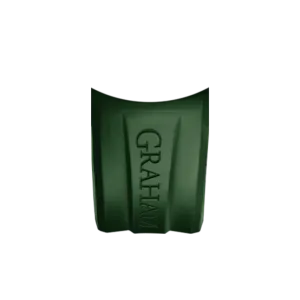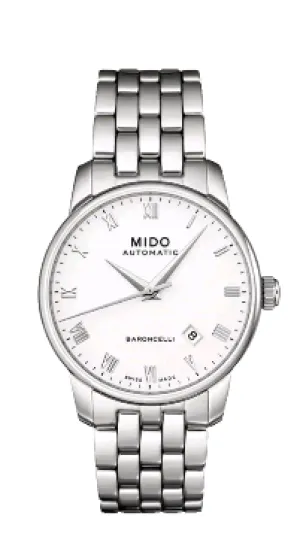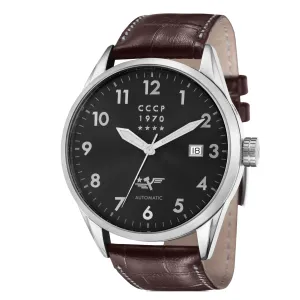A solid fourteen carat yellow gold Rolex Oyster Perpetual with an engine bezel. This is an example of what is called a "barn find" in the classic car world. This piece was bought from the family of the original owner where it had remained since its initial purchase in 1957 from Torneau, in New York City. The watch is presented with its original, and beautiful green rectangle Rolex box, and original bill of sale from Tonneau having been purchased on November 15th 1957 for $250. The watch is in superb condition. The solid fourteen carat gold case is unpolished, which is very important with these engine turned bezels especially as any polishing wheel touching the finely turned lines into the bezel will remove them and leave flat areas. Which can be seen on many examples from this period.
The dial is very rare for this reference. Other examples of this reference found are classic Rolex style flat dials. This dial, as can be seen, as an enlarged sloped rehaut where both the black printed minute track lies, along with, what is left of, the Radium lume plots. The solid applied yellow gold hour markers are the same as can be found on the Patek Philippe Calatrava reference's, even today. This leads us to believe that the dial was fabrique de Cadran Stern Freres.
Stern Freres were, and are still today, the dial maker for Patek, along with a number of other notable brands, including Rolex. Perhaps one of the most desirable and coveted Rolex watches are the "Stelline", or "star dials", such as the reference 6098. All of which were made by Stern during the period this watch here was produced. It is not a well known fact that the Charles and Jean Stern were pre-eminent dial manufacturers at the turn of the last century. So much so that Fabrique de Cadrans Stern Fréres were exclusive suppliers to Patek Philippe. During the great recession, Patek Philippe were struggling, along with a number of the marquee Swiss haute horology brands. Aware of this, and a love for the brand and its global prestige and heritage, the Stern brothers bought the company in 1932.
As can be seen on the dial, it has patina which was likely caused by moisture penetrating the case at some point in the watch's nearly seventy years of history. This is perhaps why the original owner decided to no longer wear the watch. The culmination of this moisture penetrating the case will likely be divisive; to some it will be an immediate turn off. To others it will be intriguing and desirable. No matter which side you fall on, the watch is unique as a result of its journey. There is almost an appearance of the mixing of an egg into flour as it appears to move into a vortex like pattern. There is also some loss of, and some degradation to other lume plots. However, it is not damaged, per se. It has more acquired a patina. But, as aforementioned it will either be a positive, or a negative, and perhaps not much in the middle! What is for sure is the fact that this is an original dial and not, as is very often the case with Rolex watches from this period, refinished. It is much more desirable to have a rare original dial with patina than a brand new re-finished perfect dial.
The watch is powered by one of the most beautiful, early, automatic movements Rolex produced. The caliber 1030, with its stacked movement and butterfly rotor is very beautiful on the eye. This caliber was made in-house, which was not the case for a number of Rolex's competitors at the time, and was used in a number of references at the time, including the famous Submariner 'big crown' as worn by Sean Connery in his ubiquitous; James Bond tole. As well as being the movement inside the early Explorer watches to ascend Mount Everest with Sherpa Tenzig and Hillary. Not only was this movement reliable under extreme conditions it was also granted chronometer certification, as can be seen by the "Officially Certified Chronometer" printing above the 6pm. This is presented when the watch returns from being officially timed for accuracy. When the watch passes the rigorous tests it is returned for distribution with a certification verifying its accuracy.
This superb, rare and very handsome watch is a great example of mid-twentieth century Rolex at its best. The heavy solid gold case has its original case back marked for fourteen carat gold, "14k. 0.585" inside the case back, meaning this piece was destined for US export, which is confirmed with the Rolex import stamp on the movement of "ROW". The original, period correct crown is present. This is different from later crowns as it has the Swiss Cross underneath the Rolex coronet.
It may not have its original Rolex paperwork, but having an original bill of sale is very charming, along with the rare, period correct, Rolex box. The colour of gold from this period is also very beautiful and areas, including the back of the lugs have a stunning patina to it that has been left as is, since this is part of the aging process to this now seventy one year old watch. To find gold cases like this unpolished is incredibly rare.


